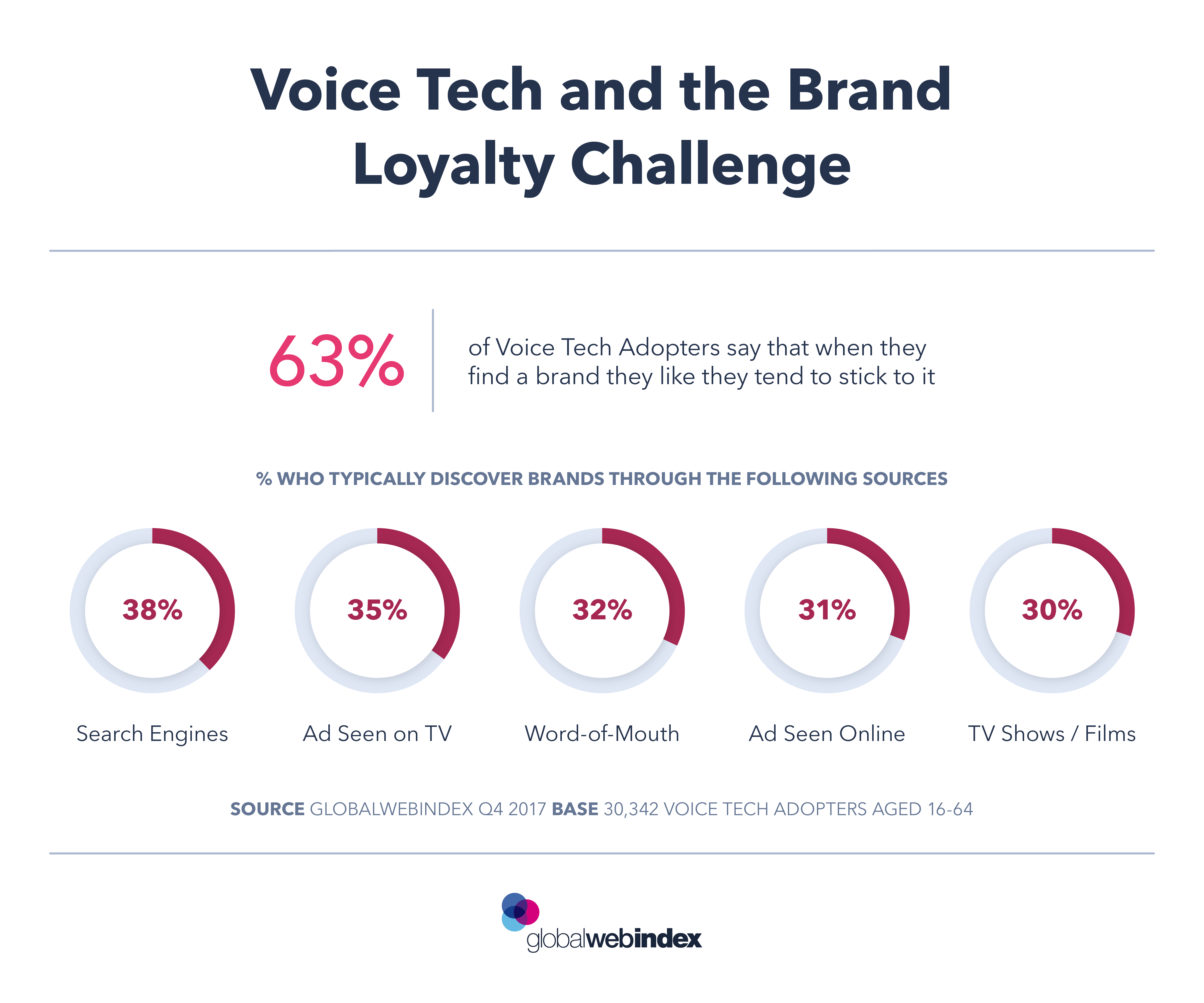Voice technology is a potential game-changer for brands. As we discussed in yesterday’s chart, the technology offers one of the most direct paths to purchase available, but this comes with a trade-off – not being able to get in front of consumers on their purchase journey. At the “Voice Tech 101” conference last year, We Are Social’s Tom Ollerton highlighted that, with voice retail, “First place is the only place”.
Almost two thirds of Smart Speaker and Voice Search Users say they are brand-loyal, with users in North America and Latin America most likely to say they stick to brands they like. Brand loyalty, combined with a streamlined purchase process, could have an impact on further product discovery, as a consumer could order a product without seeing any branded messaging. Our data suggests that this is the case, as while search engines and TV ads are the top forms of brand discovery, they under-index, meaning that users of voice-enabled devices are less influenced by branding when browsing online and watching TV.

The usual case study for how voice search could change buying habits is on commodity household products, which can be restocked when needed via a smart speaker, bypassing brand messaging in the process. Sure enough, voice tech users are 23% more likely to be buying household/grocery products online, with brand-agnostic products like pet food and baby products among the top over-indexes within that category.
As the market for voice tech retail takes shape, it’s important for brands to develop features that trigger repeat purchase habits, particularly when new users encounter the technology for the first time.
Voice Tech Adopters are defined as internet users aged 16-64 who used a voice search or command tool last month, or currently use a voice-controlled smart assistant/speaker.



